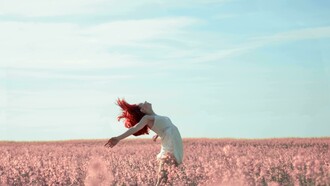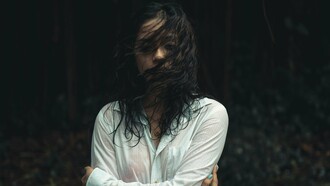You can't use up creativity. The more you use, the more you have.
(Maya Angelou)
Marta Aymerich is a creative coach from Barcelona and she was educated there at the Llotja Advanced School of Art and Design in Barcelona, Spain. At the age of eighteen, she had a near-life death experience after a serious motorcycle accident. She suffered multiple fractures in her legs, hips, and pelvis, and a concussion to her head, and endured fourteen surgeries. She spent a considerable amount of time at the hospital and she had to learn how to walk again. It was an arduous journey - one that she initially met through denial and anger - and yet she persevered, and in time her attitude shifted from one of grief, and sorrow to one of unstoppable optimism. Now, she has taken her life experiences to help other professionals and companies develop their creativity and to use it to achieve their goals.
Marta brings over thirty years of work experience as a multidisciplinary designer to her career as a creative coach. She started offering workshops four years ago. Marta’s approach is a process-orientated one that awakens creativity by exploring emotions and frustrations, learning new skills, and developing new perspectives to yield desired results.
Thanks to my accident, I learned never to give up.
(Marta Aymerich)
Do you think all of us are inherently creative?
Yes, and we must banish the limiting belief that creativity is only for those people who are dedicated to some kind of art. Creativity is a tool in all of us and an indispensable one for our survival. In the face of any adversity in life, our brain consciously and unconsciously begins to quickly connect us to ideas, concepts, experiences, and emotions to find a solution to a problem or to improve upon something. Thanks to creativity we have as a species evolved since our existence from fire to agriculture, from the wheel to the printing press, and from the moon to social networks. We can put our creativity into practice to overcome the test that life has presented to us this year and use it for the common good of all.
The pandemic forces most of us to reinvent ourselves. Could you tell us how you’re reinventing yourself?
I am readjusting my life to the new normal by redesigning my lectures and workshops to offer them online. At the same time, I’m seeking to live a more simple life and to live closer to nature.
How do the economic consequences of the pandemic differ from the global financial crisis of 2008?
Unlike 2008, this time we will see a major shift in values and a new paradigm. This crisis will be so deep and structural, and we need to comprehend it as a great opportunity for the evolution for humanity.
During the strict quarantine in Barcelona, did you have time to enjoy your creativity?
Very much so, creativity was and is my refuge, and my home was my learning space.
Tell us about one of your favorite projects?
One favorite project for a company that promotes the common good in all of society. It is an educational project called Co-Living: Learning to Share. I lead two separate teams through a series of exercises where they develop spatial planning and branding, create new locations, and form environmental protocols, economic, and emotional sustainability.
What was the first thing you did once the quarantine was lifted?
I thanked the universe and I uncorked a bottle of champagne with my family. And then I walked down to the beach to see the sea. It was amazing!!!!
What are your favorite things in Barcelona?
The people, the sea, the small bars - where I can go to have delicious wine and tapas.
What are you working on now?
I’m finishing up a book - on creativity, developing new online workshops, and working on my own personal growth.
Could you please offer us a sample exercise to help us unleash our creativity?
I call it the circles of the good feelings. I adapted an exercise from the philosopher Elsa Punset. Choose three sheets of different color paper that you like and that give you positive feelings. From each sheet cut a circle ten by twenty centimeters in diameter. Once you have the circles cut out in the desired colors and sizes, choose one circle and write a souvenir that you find very pleasant. In the next circle write the name of a person you love with all your heart, and in the third one a dream you wish to fulfill. Place your circles on different walls of the house so that each time you look at them you will feel again those affectionate emotions that generate memories, loved ones, and dreams. This is a way to train the brain little by little so that it will generate well-being and optimism through positive emotions and facilitate a more creative attitude.
I’ve learned that people will forget what you said, people will forget what you did, but people will never forget how you made them feel.
(Maya Angelou)
Art and color are two of Marta’s greatest passions and they have guided her throughout her life. Marta’s approach toward emotional intelligence is one that is intuitive and natural. She understands that we all can be a part of the solution by tapping into our creativity to resolve problems and she encourages others to do their part to help build a better and world - of harmony, inclusivity, empathy, and joy. Marta also shared that we need to learn to forgive ourselves so we can forgive others.
I met Marta through a Color Marketing Group workshop in New York nearly a decade ago. Since then we have met in London, Paris, and in her hometown of Barcelona where we have enjoyed our shared love of art, nature, and cooking. She always checks in with me to make sure I’m not forgetting my dreams and pursuing them. Marta longs to live in the verdant countryside not far from Barcelona and near the coast. Wherever Marta goes she brings her creativity, her genuine optimism, and joy with her and does the world ever need this now.















